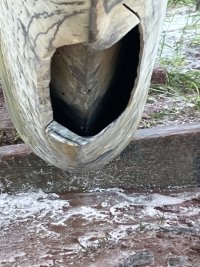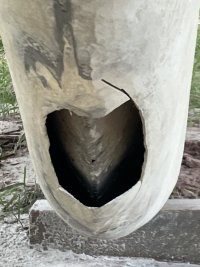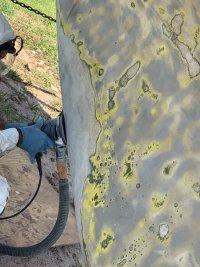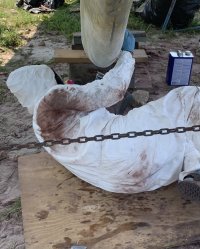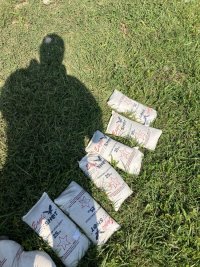I have read the same, and I even read a post elsewhere that Bruce King confirmed that lead shot was used to fill voids in these keels. That said, I have looked at every inch of the inside of the cavity with an endoscope, and there is not ONE pellet of shot anywhere. I also can't imagine that the shot would have "floated up" to get out of the voids deep in the keel. I suppose it is possible that it was removed, but for what reason? I though about the idea that the grounding that caused the hole in the leading edge could have cracked the entire keel and the shot dumped out the bottom, but no such damage appears on the inside, and the seam down the middle of the two hull halves seems perfectly intact except for where the damage occured. I would go ahead and fill it, but the voids there would probably need about fifteen gallons(maybe?) of shot, which could add 400 lbs to the keel. That's enough to change the boats sailing characteristics if it was not in the original design spec, and would also add a lot of weight just sitting on top of the fiberglass at the bottom. Currently, the casting is suspended, so it stays up there somehow. I have never felt it move in the slightest, even with the voids, so it seems pretty solidly set in there (maybe even bolted? -though no keel bolts are visible in the bilge. I will keep looking for answers, though. I may put a few shots up here later from the endoscope trip down the keel trunk so every one can see the fairly pristine condition of the glass on the inside of the keel.

